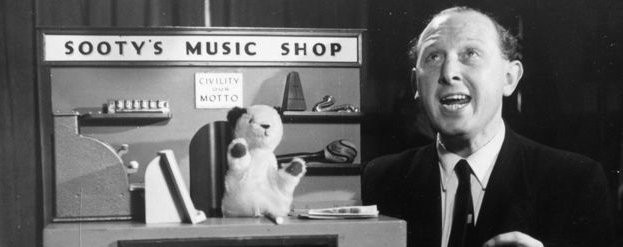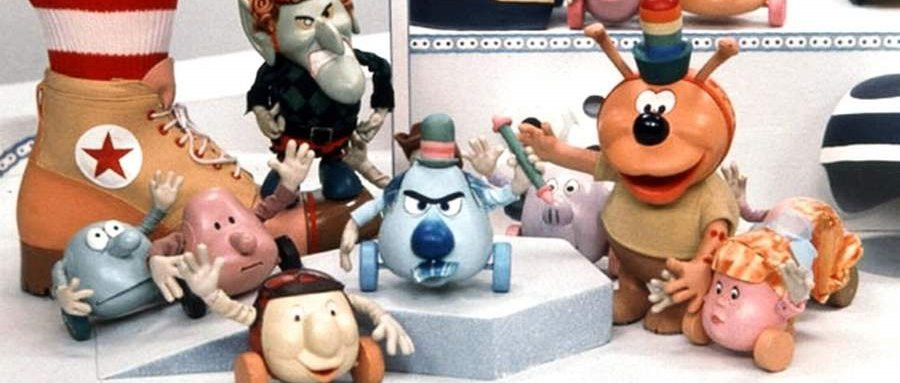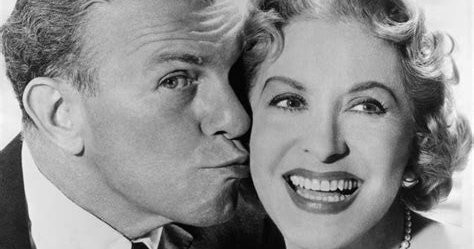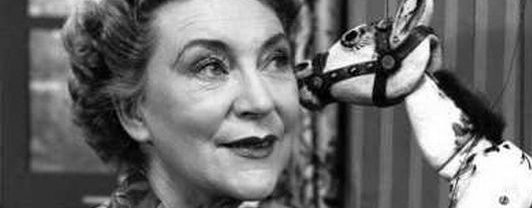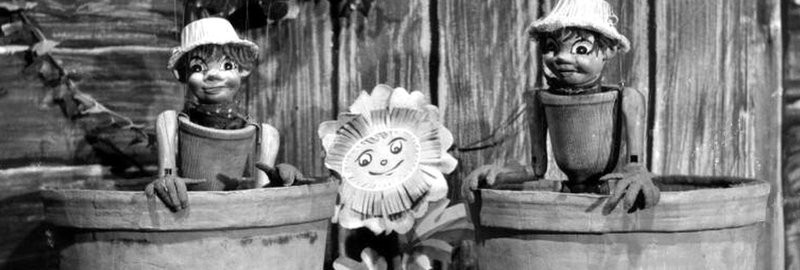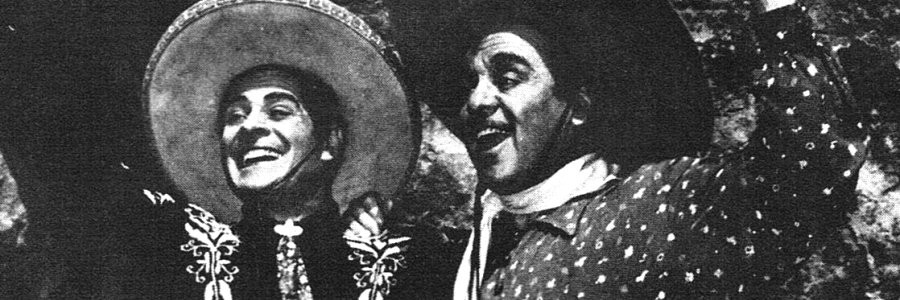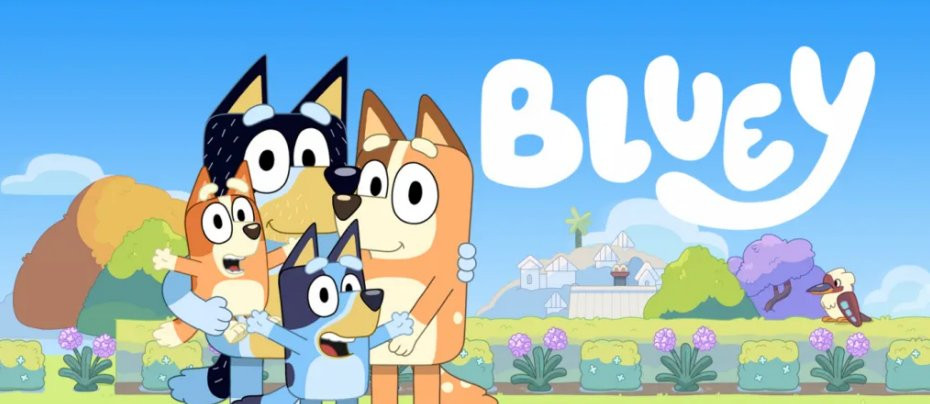
Andy Pandy
1950 - United KingdomAndy Pandy, with his blue and white striped suit and floppy hat, was the creation of schoolteacher Maria Bird and Freda Lingstrom.
Originally an art student, Lingstrom had become an artist of some distinction and painted murals in a 19th century building that was for many years the Norwegian Embassy: Norway House, overlooking Trafalgar Square in London. She had also worked in textiles, china and glass. Having joined the BBC in 1942, Lingstrom began her broadcasting career in radio's Home News Talks Department. She was later transferred to the Schools Broadcast Department where she started the Looking at Things series. She was an accomplished scriptwriter and had already written four novels, one of which, Beggar's Fiddle, was serialised in Woman's Hour, when in 1951 she took up her appointment as Head of TV Children's Programmes. Before doing so, Lingstrom and her live-in partner, Bird, had conceived the idea of a puppet character that would appeal to pre-school children and be broadcast in the slot known as For the Children.
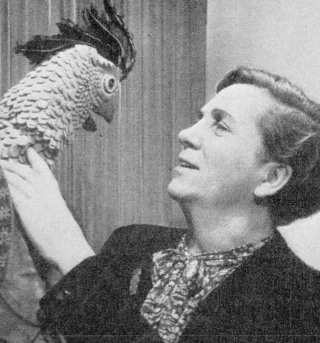
During a train journey into London in 1950, Lingstrom met Audrey Atterbury, whose husband, Rowley, had founded the Westerham Press the previous year. The two ladies struck up a conversation and found they had a number of common interests. Lingstrom somehow persuaded Atterbury to become a puppeteer on her proposed toddler programme. Lingstrom then approached an elderly neighbour in the village of Westerham where they lived, to craft the string puppet - a toddler in striped clown outfit - approximately three years of age, which they called Andy Pandy, in order to produce four experimental episodes. According to various sources, Andy Pandy's features were based on Audrey's son, Paul, who would many years later appear as one of the experts on Antiques Roadshow. Taking the Atterbury's lead, Bird and Lingstrom formed Westerham Arts Films.
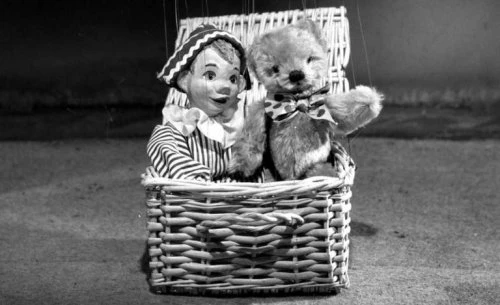
The four experimental episodes, narrated by Maria Bird, were broadcast as live in the summer of 1950 by the BBC who then invited viewers to express their opinion before going into full production with a series. The response was wholly positive, however Lingstrom wanted to hold the series back as she was planning a new series called Watch With Mother. As a result, it wasn't until 16 September 1952 that the first of the 26 episodes (for that is all that was ever made of the original series) was broadcast. Realising that if the programmes were filmed they could be repeated, each episode was shot on 16mm film, which was primarily used for low-budget motion pictures.
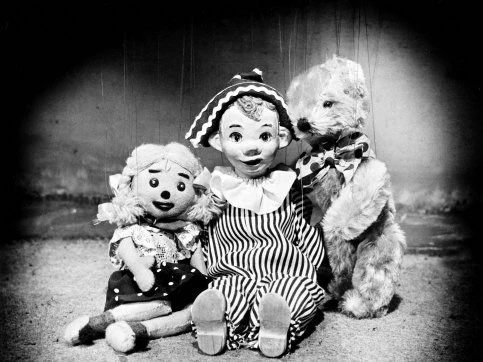
Andy Pandy lived in a picnic basket and was accompanied by Teddy and (later) Looby Loo, a rag doll who had her own special song; "Here we go Looby Loo". Children were encouraged to take part in the fifteen-minute episodes by copying the antics of Andy and Teddy. When Andy was seen on a swing the young audience were prompted "Children, you swing your arms backwards and forwards and pretend you’re on a swing just like Andy!" And Teddy's dance, which the children could easily follow was accompanied by "Round and round the garden, like a teddy bear, one step, two step, jumping in the air!" At the end of each episode, Andy and Teddy were encouraged to return to the picnic basket that was their home (but not Looby as this would have been inappropriate for the time). Andy would be the last to say goodbye, accompanied by a short ditty of "Time to go home, Time to go home, Andy is waving goodbye." The stories were told by Vera McKechnie (none of the puppets spoke for themselves), Audrey Atterbury operated Andy via his very visible strings, and songs were sung by Janet Ferber. Atterbury later recalled the first transmission as being something of a disaster involving tangled strings. Apparently she went home and cried.
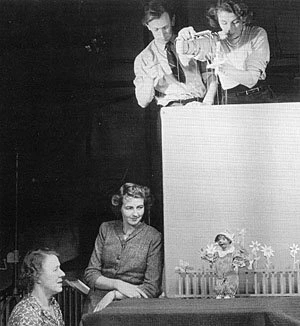
Andy Pandy, along with The Flowerpot Men and the Woodentops became the cornerstones of the Watch With Mother strand. Andy Pandy continued in repeat form right up until 1969 when the original black and white prints became too poor to use. The following year thirteen new colour episodes were shot at the Abbey Road studios and these were repeated until 1976. Andy Pandy was revived as a stop motion animation made by Cosgrove Hall in 2002, voiced by Tom Conti and shown on the BBC's channel for young children, CBeebies.
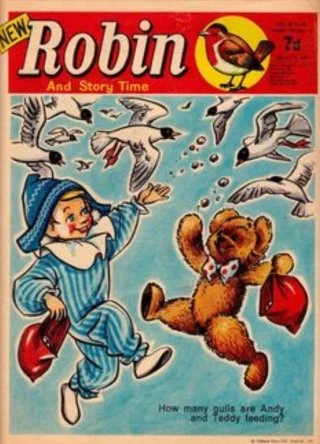
The show was the basis for a comic strip of the same name in the children's magazines Robin and Pippin.
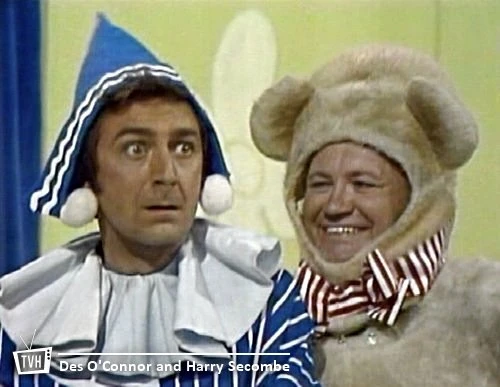
Over the years the characters of Andy, Teddy and Looby Loo have also been the subject of many humorous interpretations, the most memorable perhaps being a sketch on the Des O'Connor show; 'Dandy Sandy' has O'Connor as Dandy, Harry Secombe as Teddy and Britt Ekland as Lucy Loose. There is also a more adult, but very funny version on YouTube.
Very much a product of its time, Andy Pandy is remembered with much fondness by several generations.
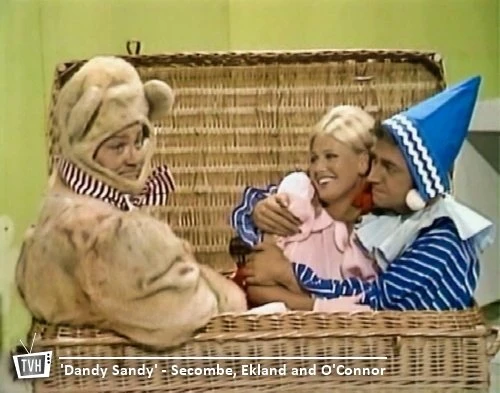
Goodbye children...Goodbye
Seen this show? How do you rate it?
Seen this show? How do you rate it?
Published on October 24th, 2020. Written by Marc Saul for Television Heaven.


